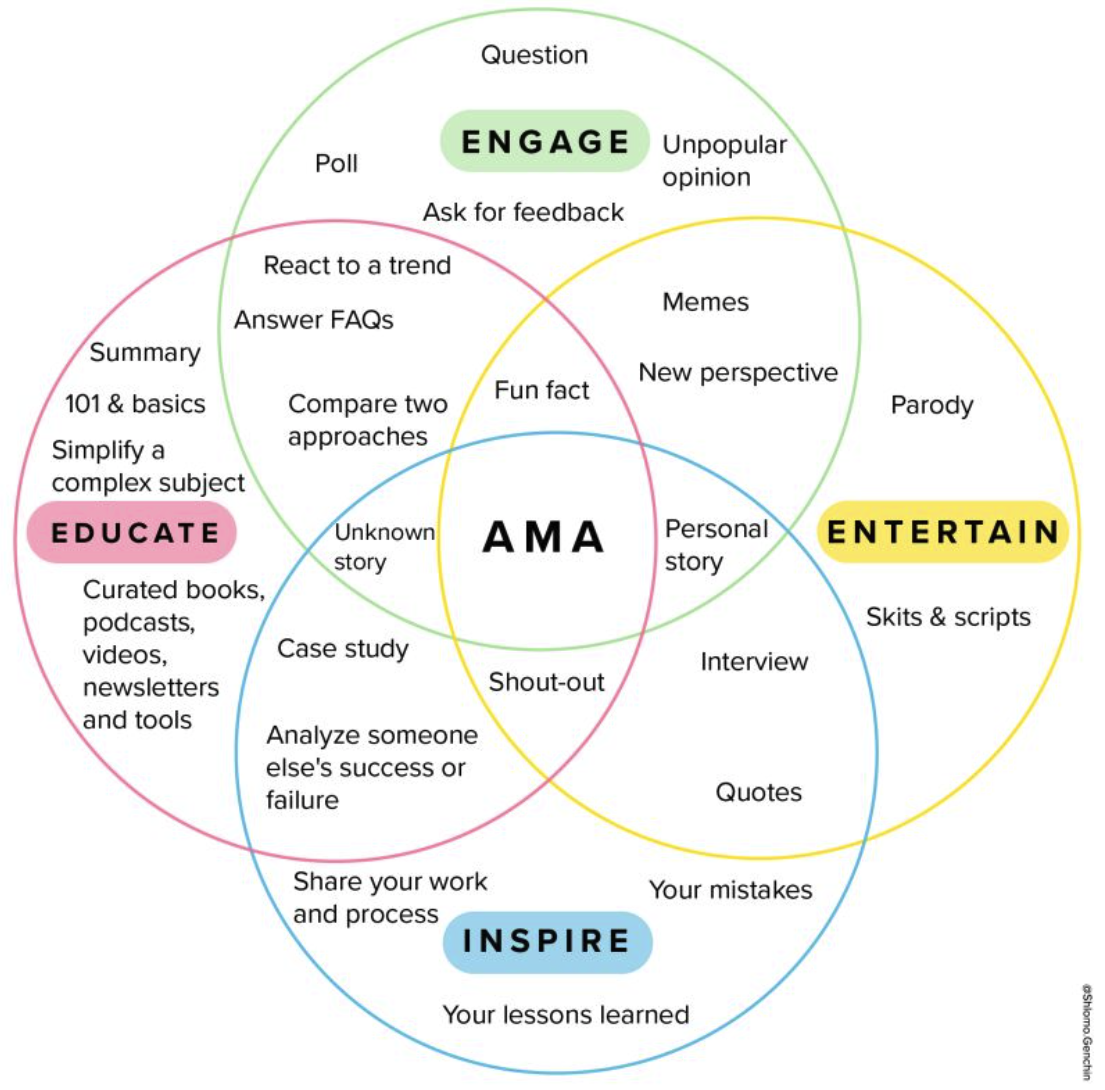The (Expanded) Photography Studio Growth Formula
TABLE OF CONTENTS
- Overview of the Photography Studio Growth Formula
- Understanding Your Lead Pipeline and Average Contract Value to Forecast Revenue
- Understanding the Customer Acquisition Cost to Lifetime Value Ratio (CAC:LTV)
- Creating an Annual Marketing Budget Based on Unit Level Assumptions
- Conclusion
- Glossary of Terms
- Additional Resources and Further Reading
Overview of the Photography Studio Growth Formula
The Photography Studio Growth Formula is a strategic approach to business growth that emphasizes the importance of data and measurable metrics. The formula considers elements like your lead pipeline, average contract value, and customer acquisition costs, among others.
The Growth Formula is not a one-size-fits-all solution but a framework that needs to be tailored to each studio's unique context and objectives. It brings together marketing, sales, and financial planning into a cohesive growth strategy that enables studios to optimize their operations, maximize their marketing return on investment, and ultimately, increase their bottom line.
This white paper will take you on a journey through the various elements of the Photography Studio Growth Formula. We will dive deep into each component, providing real-world examples and practical tips that you can apply directly to your business. By the end of this guide, you will have a comprehensive understanding of how to use these metrics to your advantage and set your photography studio on the path to sustained growth and success.
Understanding Your Lead Pipeline and Average Contract Value to Forecast Revenue
What is a lead pipeline and why it matters
In any business, the sales or lead pipeline is a visual representation of where potential customers are in the purchasing journey. For a photography studio, a lead pipeline might include stages such as 'initial contact', 'consultation', 'proposal sent', 'follow up', and 'booking confirmed'. Understanding your lead pipeline is crucial because it provides visibility into the sales process, allowing you to monitor progress and identify any bottlenecks or opportunities for improvement.
For instance, if you notice many potential clients are dropping off after the 'proposal sent' stage, you might need to refine your proposal or follow-up strategy. Alternatively, if you're getting plenty of initial contacts but few are moving to the 'consultation' stage, perhaps your lead qualification process needs improvement.
The revenue formula - leads per month, conversion to paid customers, and average contract value
Understanding your lead pipeline is just the first step. To forecast revenue, we need to dive deeper into three critical metrics: the number of leads per month, the conversion rate to paid customers, and the average contract value.
- Leads per month: This is the total number of potential clients who express interest in your services each month. It could include people who contact you via your website, referrals from past clients, or leads generated through marketing efforts. Tracking this number over time can help identify trends and gauge the effectiveness of your lead generation strategies.
- Conversion rate to paid customers: This is the percentage of leads that eventually book your services. Not all leads will become customers, so it's important to understand this conversion rate as a percentage. This will depend on various factors, including the quality of your leads, your sales process, and the competitiveness of your offerings.
- Average contract value: This is the average revenue you earn from each booked client. It's calculated by dividing your total revenue by the number of contracts in a given period. Knowing your average contract value gives you a benchmark for forecasting revenue and helps in pricing strategy.
Real-world example: Using a lead pipeline, conversion rate and Average contract value to forecast your studio’s revenue
Let's illustrate this with an example. Suppose you typically generate 20 leads per month, and historically, about 20% of these leads convert into paying customers. This means you usually secure about 4 bookings per month. If your average contract value is $3,000, your estimated monthly revenue would be $12,000 (4 bookings x $3,000). There is very likely seasonality at play here, though if we extrapolate the monthly revenue into an annual figure, this studio generates $144,000 per year (12 months x $12k revenue per month).
Knowing these figures, you can make informed decisions about where to focus your efforts. If you want to increase revenue, you might consider strategies to increase your leads per month, improve your conversion rate, or raise your average contract value. These are the three levers available to you. Each of these levers provides a unique opportunity for growth. Understanding your numbers allows you to experiment, measure, and refine your approach over time for maximum impact.
For instance, let's say this studio wants to grow revenue by $30k - how many leads do they need to generate to achieve this goal?
Using the same assumptions from above, here's a simple table the marketing funnel from lead generation to revenue:
| Stage of Funnel | Total |
|---|---|
| Leads Required | 50 |
| Conversion Rate | 20% |
| New Clients | 10 |
| LTV per Client | $3,000 |
| Total Revenue | $30,000 |
Here's a breakdown of each row, it's actually easiest to start from the bottom:
- Total Revenue: The total new revenue goal from the new clients
- LTV per Client: The average Lifetime Value per client, which in our case is $3k.
- New Clients: Dividing your total revenue goal by the LTV per client highlights you need to generate 10 new clients to hit your goal.
- Conversion Rate: Informed via analysis of your historical lead pipeline (total leads / new clients)
- Leads Required: Now we divide the number of required new clients by our conversion rate to identify the total number of leads needed to hit your goal.
Understanding the Customer Acquisition Cost to Lifetime Value Ratio (CAC:LTV)
The significance of CAC:LTV ratio in business growth
Customer Acquisition Cost (CAC) and Lifetime Value (LTV) are two key metrics in the financial health and sustainability of your business. CAC is the cost associated with acquiring a new customer. To identify your current CAC, simply divide the number of new customers by all marketing-related costs (don’t forget to apply a cost to the time you yourself spend here!) over the last 12 months.
On the other hand, LTV is a prediction of the net profit attributed to the entire future relationship with a customer. For a photography studio, this could include the revenue from wedding and a family portrait, which would assume your typical client purchases both offerings. LTV is a more advanced component, so feel free to keep it simple with an LTV based on the first transaction and the Average Contract Value associated with that offering.
The CAC:LTV ratio is a crucial indicator of your business's long-term viability. It goes without saying, the value a customer brings (LTV) should be greater than the cost to acquire them (CAC). A common best practice suggests that the ratio of CAC to LTV should be no greater than 1:3, meaning the value of a customer should be three times the cost to acquire them. This ratio ensures that your business is profitable and that you're investing your marketing dollars wisely.
Best practices - Targeting a CAC of 1/3rd LTV at the individual client level
Targeting a CAC of 1/3rd LTV at the individual client level means that for every dollar you spend on acquiring a customer, you should aim to earn three dollars back over the customer's lifetime. This ensures you are not over-spending to acquire customers and that you have a healthy profit margin.
To achieve this, you need to have a deep understanding of both your CAC and LTV. For CAC, this means tracking all costs associated with customer acquisition, including marketing costs, sales personnel costs, and any software or tools used in the process. To calculate LTV, consider the revenue you expect to earn from a customer over their lifetime, accounting for factors like subsequent purchases (that happen a majority of the time).
It's important to note that the "lifetime" of a client for a wedding photographer could be relatively short compared to other industries, as many clients may not have repeat business once their wedding is photographed. However, other factors can extend this lifetime value, family photoshoots, anniversary photoshoots, or other future services. This implies one of the most important growth levers for any studio is to build on existing client relationships by offering other services.
Real-world example: Determining a customer acquisition budget using CAC:LTV
Let's consider an example. Suppose your average contract value is $3,000. After accounting for your costs (like labor, equipment, editing software, etc.), let's say your net profit per client is $2,000.
In this case, aiming for a CAC:LTV ratio of 1:3, you could justify spending up to $666 ($2,000 / 3) to acquire a customer. This budget could be allocated across various marketing activities like digital advertising, networking events, or partnerships with wedding planners.
Of course, these numbers are hypothetical, and the actual figures will vary based on your business model, local market, pricing structure, and other factors. But understanding the concept of CAC:LTV and regularly tracking these metrics can guide your decision-making and contribute to your studio's sustainable growth.
Creating an Annual Marketing Budget Based on Unit Level Assumptions
The importance of a structured marketing budget
Having a structured marketing budget is essential for the growth and sustainability of your photography studio. It not only provides a roadmap for your marketing initiatives but also allows you to measure return on investment (ROI) for each campaign, helping to identify which strategies are the most effective and worth investing in further.
An annual marketing budget is typically calculated based on your business revenue and goals. It takes into account all aspects of marketing - from digital advertising to networking events, content creation, SEO, and collaborations. It also considers fixed costs such as marketing software subscriptions, website maintenance, and staff costs.
By setting a budget, you ensure that your marketing expenditure remains within a range that is affordable for your business while still allowing you to achieve your goals - be it increasing brand visibility, attracting more leads, or improving conversion rates.
How to use unit-level assumptions to create an annual marketing budget
Creating an annual marketing budget based on unit-level assumptions involves breaking down your overall goals into measurable, smaller units, and budgeting accordingly. This approach allows you to allocate your marketing budget in a way that directly aligns with your business objectives.
Here's a step-by-step guide on how to go about it:
- Define Your Goals: Start by outlining your objectives for the year. Are you looking to increase your leads? Improve your conversion rate? Generate more referrals? Your marketing budget should align with these goals.
- Understand Your CAC and LTV: As discussed earlier, knowing your CAC:LTV ratio is critical in determining how much you can afford to spend on acquiring a customer. Aim for a CAC that is a third of your LTV.
- Calculate Costs for Each Unit: Break down your goals into smaller units (or tasks) and assign a cost to each. For instance, if one of your goals is to generate 100 new leads through digital advertising, and you know that the average cost per lead is $20, then you'd allocate $2,000 of your budget for this task.
- Monitor and Adjust: It's essential to keep track of your spend and the results you're getting. This will allow you to make data-driven decisions and adjustments throughout the year.
Real-world example: An example of an annual marketing budget for a photography studio with a goal of growing revenue $30k
Let's build on our original example with a hypothetical studio intending to grow revenue by $30k (or +10 new clients per year moving forward). We know that means they need to generate 50 additional leads and maintain their historical conversion rate (20%) and ACV ($3k), but how should they plan a budget to achieve this growth?
Let's start by establishing an overarching budget, we'll then provide an example of how to allocate this budget across marketing channels and tactics:
| Goal | Total |
|---|---|
| New Clients Target | 10 |
| CAC budget per Client | $666 |
| Total Marketing Budget | $6,660 |
Here's a breakdown of each row:
- New Clients Target: The number of new clients the studio aims to acquire, which in this case is 10.
- CAC per Client: The maximum Customer Acquisition Cost per client. This is how much the studio is willing to spend to acquire each new client. In this case, it's 1/3 of $200 (the studio's margin after fixed costs).
- Total Marketing Budget: The total marketing budget available to achieve the target number of new clients, calculated by multiplying the New Clients Target by the CAC per Client. So, 10 new clients times $666 per client equals a total marketing budget of $6,660.
Now, let's dive into how we can allocate that budget to ensure we generate the additional 50 leads.
Here's a Venn diagram that lays out the wide world of marketing tactics, based on the intended reaction of your audience, which is a useful prop for getting your marketing juices flowing:

If the above represents the intended substance of the message / reaction, let's think about the channels you'll use to deliver the message and reach potential clients. This example marketing budget allocation is based on a best practice mix (as a percentage of total spend).
1. Digital Advertising (50%):
Actionable Tactic - Facebook & Instagram Advertising
Leverage the power of social media advertising. With your budget, you can run targeted ads on platforms like Facebook and Instagram, which are popular among couples planning their weddings. A key tip here is to use eye-catching visuals from your portfolio and use the targeting options to narrow down your audience to engaged couples in your service area. Test different ad creatives and copies to find what works best for your audience. You can also consider hiring a digital advertising agency or a freelance expert to optimize your ad campaigns.
2. Content Marketing (25%):
Actionable Tactic - Blogging & Guest Posting
Create a blog on your website where you share valuable content such as tips for planning a wedding shoot, behind-the-scenes at a photoshoot, or even stories of the couples you've worked with. This not only helps drive organic traffic to your website but also establishes you as an authority in your field. Another tactic is to write guest posts for popular wedding planning websites or local vendors' blogs and link back to your website, this will help in driving relevant traffic and improve SEO.
3. SEO (15% ):
Actionable Tactic - Local SEO & Google My Business
Invest in local SEO by optimizing your website for keywords that are relevant to your local area (for example, "wedding photography in [your city]"). Make sure your Google My Business page is up-to-date and includes your latest work, positive reviews, and all relevant information about your business. This will improve your chances of showing up in local search results. If SEO is not your strength, consider hiring a local SEO expert or an agency.
4. Networking Events and Partnerships (10%):
Actionable Tactic - Attend Local Events & Form Partnerships
Attend local bridal shows, networking events, or community gatherings to connect with potential clients and other businesses that cater to your target audience (like wedding planners, event venues, or dress shops). This can lead to referrals and opportunities for collaboration. Furthermore, consider forming partnerships with other local businesses that serve the same market. For example, a deal where a local wedding planner recommends your services to their clients in return for you promoting their services can help both businesses.
Remember that marketing is an iterative process. Keep refining your strategy based on what's working best for you, and you'll see a steady increase in leads and clients over time.
Conclusion
The "Photography Studio Growth Formula" is a comprehensive guide designed to provide you with the tools and insights necessary to grow and scale your photography business. By understanding the intricate mechanics of your lead pipeline and the value of each contract, you can predict your revenue and make data-driven decisions that align with your business goals.
The insights into the Customer Acquisition Cost to Lifetime Value Ratio (CAC:LTV) have hopefully illuminated the critical balance between how much you spend to acquire a customer and the revenue that customer brings to your business. With this understanding, you can strategically plan your marketing budget, allocating resources where they have the greatest impact and provide the best return on investment.
It's also worth mentioning that creating an annual marketing budget based on unit-level assumptions enables you to break down your broad objectives into manageable, actionable parts. This approach allows for efficient use of resources, making sure every dollar you spend aligns with your goals and moves your business towards sustainable growth.
The guidelines and real-world examples provided for each category of your marketing spend should offer a starting point for you to construct a diversified marketing plan. Remember, every business is unique and the marketing mix that works for one might not work for another. Continual monitoring, testing, and adjustment are crucial for finding the strategy that best suits your photography studio.
We encourage you to explore these strategies, experiment with different tactics, and track your results. With time, patience, and dedication, you will see a transformation in your business operations and, ultimately, your bottom line. Stay inspired, stay focused, and remember - you're not alone on this journey. The Pixifi community is here to support you every step of the way.
Here's to your success!
Appendices
Glossary of Terms
- Lead Pipeline: A visual representation of where your potential customers are in the purchasing journey. It helps businesses understand their sales process and identify areas for improvement.
- Average Contract Value (ACV): The average revenue that a single contract will generate for your business.
- Customer Acquisition Cost (CAC): The cost associated with convincing a potential customer to buy a product or service, including marketing and sales expenses.
- Lifetime Value (LTV): The projected revenue that a customer will generate during their lifetime.
- CAC:LTV Ratio: A metric that allows businesses to determine the balance between the cost of acquiring a customer and the value that customer provides over their lifetime.
- Marketing Budget: An estimate of the funds that a company plans to spend on marketing over a specific period.
- Return on Investment (ROI): A financial metric used to measure the probability of gaining a return from an investment. It is a ratio that compares the gain or loss from an investment relative to its cost.
Additional Resources and Further Reading
- Understanding the Sales Funnel: A Comprehensive Guide - A detailed guide on understanding and optimizing your sales funnel.
- The Importance of Knowing Your Customer Acquisition Cost - A blog post by Neil Patel on understanding and reducing your CAC.
- How to Calculate and Increase Customer Lifetime Value - An article by Shopify on calculating and increasing customer lifetime value.
- The CMO Survey: Highlights and Insights - A comprehensive survey report on marketing budgets, trends, and insights.
- The Photographer’s Guide to Marketing and Self-Promotion - A book by Maria Piscopo on marketing strategies for photographers.
- SEO for Photographers: The Complete, Always-Updated Guide - A complete guide to SEO for photographers by Shotkit.
More from Pixifi











